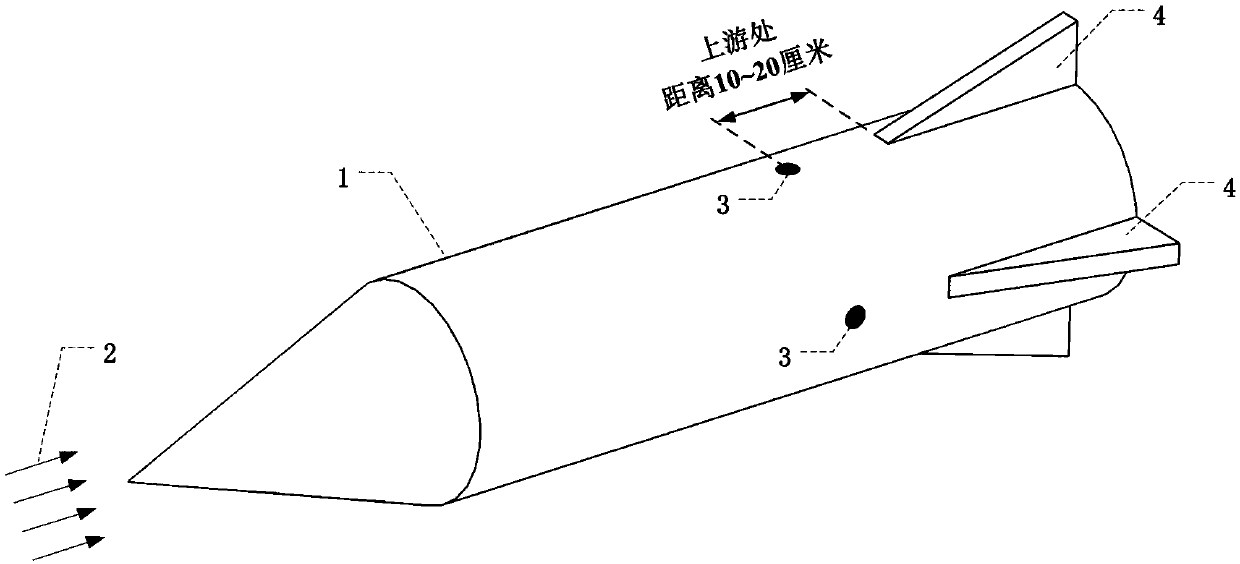A drag reduction method for hypersonic vehicles based on the leading edge shock attenuation of synthetic jet wings
A hypersonic and synthetic jet technology, applied in aircraft, supersonic aircraft, drag reduction, etc., can solve the problems of difficulty in ensuring the overall stiffness, high development cost, and small amount of fuel that can be carried, and achieve easy electrical parameter control, structural Simple, drag-reducing effect
- Summary
- Abstract
- Description
- Claims
- Application Information
AI Technical Summary
Problems solved by technology
Method used
Image
Examples
Embodiment Construction
[0029] Attached below Figure 1 to Figure 4 , the embodiment of the present invention will be further described in detail.
[0030] refer to figure 1 , during the flight of the hypersonic vehicle 1, under the interaction between the high-speed free flow 2 and the hypersonic vehicle 1, an oblique shock wave is formed on the flank 4 of the hypersonic vehicle, that is, the flank oblique shock wave 5. In the state of athermal jet control Next, the distance between the flank oblique shock 5 and the hypersonic vehicle’s flank 4 is relatively close, the flank oblique shock 5 is stronger, the pressure behind the flank oblique shock 5 is greater, and the resistance on the flank surface of the hypersonic vehicle is greater. Bring greater resistance to the flight of hypersonic aircraft.
[0031] refer to figure 2 , the present invention provides a hypersonic vehicle drag reduction method based on synthetic jet wing leading edge shock wave weakening, and a plasma synthetic jet exciter...
PUM
 Login to View More
Login to View More Abstract
Description
Claims
Application Information
 Login to View More
Login to View More - R&D Engineer
- R&D Manager
- IP Professional
- Industry Leading Data Capabilities
- Powerful AI technology
- Patent DNA Extraction
Browse by: Latest US Patents, China's latest patents, Technical Efficacy Thesaurus, Application Domain, Technology Topic, Popular Technical Reports.
© 2024 PatSnap. All rights reserved.Legal|Privacy policy|Modern Slavery Act Transparency Statement|Sitemap|About US| Contact US: help@patsnap.com










